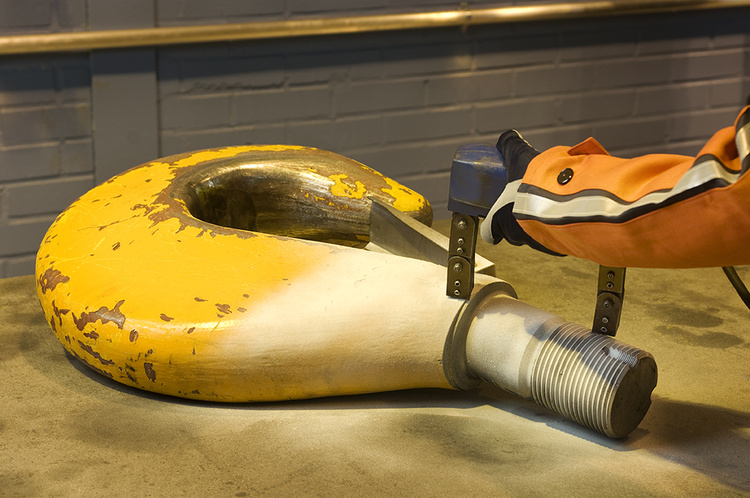Check critical overhead crane components for signs of fatigue
A crane’s bottom block assembly is made of many critical components that are subjected to loads and stresses during each hoisting cycle. While hook failure can occur due to overloading or mechanical abuse of the hook, hooks most often fail due to cumulative fatigue. These failures usually originate as a fatigue crack in the hook shank. The hook shank, which transfers the load to the hook block, is supported within the body of the block by a rotate bearing and other mechanical components not visible without disassembly.
You may not get any prior warning in the case of a fatigue failure. Fatigue failure is dependent on the load, stress level and number of lifting cycles. Heavy process-duty applications, changes in application, overloads, old equipment and the use of below-the-hook lifting devices are all factors that may contribute to cumulative fatigue.
Non-destructive testing for crane hook inspections
Konecranes utilizes various proven non-destructive testing techniques such as dye penetrant, magnetic particle and magnetic rubber, in addition to the visual inspection and measurements normally performed during a hook inspection. Most importantly, the bottom block is completely disassembled. Then, critical components are examined along with the hook shank, where most fatigue failures originate.
